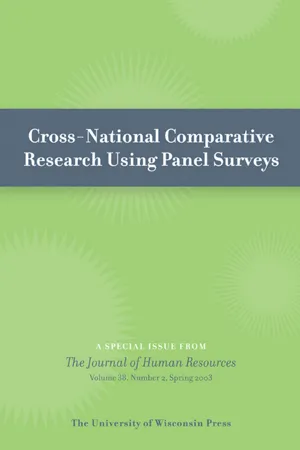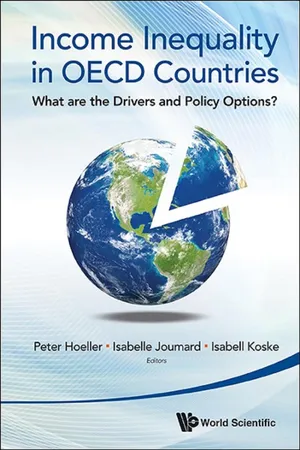Economics
Distribution of Wealth
The distribution of wealth refers to how assets and resources are divided among individuals or groups within a society. It encompasses the unequal allocation of income, property, and other forms of wealth. This distribution is a key focus in economic analysis and policy-making, as it can have significant implications for social and economic stability.
Written by Perlego with AI-assistance
Related key terms
1 of 5
4 Key excerpts on "Distribution of Wealth"
- eBook - ePub
Capitalism in the UK
A Perspective from Marxist Political Economy
- Mike Campbell(Author)
- 2023(Publication Date)
- Routledge(Publisher)
1The pattern of wealth distribution in the UK is not a peculiarly UK phenomenom rather it is a basic feature of all capitalist societies, though of course the degree of inequality observed does vary to some degree.2 This implies that despite many institutional, cultural and policy differences between countries, the basic cause of inequality is common to them all i.e. an economic system based on capitalist relations of production. The Inland Revenue publish estimates of the Distribution of Wealth based on estate duty returns which is a major source of information on wealth distribution, because individuals, and not all individuals at that, are only required at death to reveal their net wealth holdings, for the purpose of filling in a return for estate duty payment. According to these estimates the Distribution of Wealth is becoming increasingly diffused and more equally distributed over time. For example their figures show a decline in the Gini co-efficient of concentration from 0.76 in 1960 to 0.65 in 1970.3 However, the Inland Revenue data in its basic form is unreliable and inaccurate for a number of reasons.4 First, the estimates cover less than half of the adult population for they are based on the estates on which duty was paid or probate needed in that year and in consequence more than half of those dying annually are excluded from the statistics. These exclusions of individuals, generally with zero or very small amounts of wealth, are thus ignored in the data and hence the degree of concentration is understated. Moreover this only gives us information about those dying in a particular year, so that to convert the data to an estimate of the Distribution of Wealth of the living requires the assumption that those who die in any year are a random sample of the living population, and moreover requires the use of the ‘mortality multiplier’ to achieve this estimate. Secondly, the wealth of those who are covered by the data is understated mainly because of the use of tax avoidance techniques by individuals, including the transfer of wealth as a ‘gift’ to others which is then exempt from duty,5 - eBook - PDF
Economics and Ecology
United for a Sustainable World
- Charles R. Beaton, Chris Maser(Authors)
- 2016(Publication Date)
- CRC Press(Publisher)
To Marx, therefore, the capitalists were unfairly expropriating the surplus, and the resultant pattern of distribution was unfair. 96 Economics and Ecology: United for a Sustainable World But economic methodology has erected formidable bulwarks against nor-mative arguments (those based on value), which question the fairness of dis-tributional practices and their results. For instance, arguments in defense of continual economic growth, as the ultimate answer to questions of distribu-tion, contend that inequality is a necessary effect (the other side of the coin, if you will) of the accumulations of capital required for the large-investment projects deemed necessary to keep the economy moving. In their most vir-ulent form, these arguments contend that concentrations of wealth (read “inequality”) demonstrate to the worker, the underclass, or those just start-ing out, that they, too, can reap the benefits of the “land of opportunity” if only they are diligent and hard working. Recitation of this fairy tale could continue ad infinitum . Although the fairy tale may have been more-or-less true for some peo-ple throughout the economic history of the United States, it has not been true for many others, no matter how hard they have worked. An old adage helps to explain this inequity: It takes money to make money. Such amounts of money are seldom available to the average person, no matter how hard that person works. With the foregoing in mind, it is helpful to review briefly the conventional wisdom of mainstream market economics on the issue of distribution. Every economic system employs all sorts of resources or components of production. Here, however, we are focused on the human component, because the primary issue with respect to the distribution of income is the equity with which employees are treated in terms of monetary compensa-tion for their labor. - eBook - PDF
Cross-National Comparative Research Using Panel Surveys
Special Issue of Journal of Human Resources 38:2 (Spring 2003)
- James P. Smith, Frank Stafford, James R. Walker, James P. Smith, Frank Stafford, James R. Walker(Authors)
- 2010(Publication Date)
- University of Wisconsin Press(Publisher)
This point is consistent with the wide political support in the United States for an elimination of the estate tax. 22. Assuming everyone holds positive wealth, the logarithmic wealth distribution would be unchanged but the absolute distribution would spread out. For example, given a 10 percent return to wealth, $10,000 increases to $11,000 while $100,000 increases to $110,000. Although rankings do not change, the distribu- tion has become more unequal. Klevmarken, Lupton, and Stafford 341 as the young become middle-aged and middle-aged consume their wealth in retire- ment. On the other hand, variation can also be a result of phenomena exogenous to individual choice. These range from various forms of discrimination that alter the ‘‘rules of game’’ for specific groups of people to inherent differences in ability. Distinguishing between tastes and inherent impediments is a crucial step in monitor- ing economic inequality. While in both countries there is a variety of interesting assessments of macroeco- nomic factors, in this paper, we instead focus on a reduced form version of quantile mobility and examine the extent to which initial conditions affect quantile mobility without seriously ferreting out its fundamental causes. High wealth mobility (in dol- lars) can contribute to a high wealth inequality, and a high mobility might make a high inequality more acceptable from an equity point of view. We thus turn to a comparative analysis of mobility. A. Background and Measures How does mobility in the wealth distribution compare across the two countries? If the cross-sectional wealth distribution is widely dispersed is it still possible that the rich and poor trade places frequently in either or both countries? What do we mean by trading places? One definition is movement in relative position in the wealth distribution through time, such as changing location in the decile or quintiles of wealth through time. - eBook - ePub
Income Inequality In Oecd Countries: What Are The Drivers And Policy Options?
What are the Drivers and Policy Options?
- Peter Hoeller, Isabelle Joumard, Isabell Koske(Authors)
- 2013(Publication Date)
- WSPC(Publisher)
• The countries with the most unequal income distribution are not necessarily those with the most unequal wealth distribution. Among the countries covered in this study, wealth inequality is particularly high in Sweden and the US and is the lowest in Italy.• In all countries, assets are a more important contributor to overall wealth inequality than debt. Nonfinancial assets contribute more than financial assets, even though financial assets are more unequally distributed in all countries. This is explained by the higher share of nonfinancial assets in total assets.• Wealth inequality has trended down during the 20th century until the mid-1970s to early 1980s, from which point wealth inequality has been rising. The rise in inequality reflects (i) soaring financial markets in the aftermath of financial market deregulation that started in the 1970s; (ii) lower marginal tax rates on top incomes and lower capital gains and wealth taxation which have made the accumulation of wealth easier for the rich; and (iii) at least in France, inheritances and inter vivos gifts have risen again in importance over the past 30 years and stood at nearly 15% of national income in 2008, nearly as high as a century ago.Measuring the Distribution of Wealth
Wealth can be measured in different ways. Marketable wealth is the narrowest concept and includes only assets that generate capital income. Another possibility is to consider household disposable wealth which is the market value of assets minus liabilities that are directly tradable, with housing considered liquid enough to qualify. Augmented wealth is the most encompassing concept both in the time dimension, as it includes the present value of all discounted future income, and in the number of assets considered as both pension rights and human capital are also included. However, given data limitations, studies generally define wealth as household net worth, the sum of household financial and non-final assets minus debt, which is the concept used here.This implies that the value of pension rights and life insurance are excluded from the analysis. However, from a life-time perspective, assets that underpin future consumption should also be included. And not only is an important part of wealth left excluded, the cross-country comparability of the data is also reduced since the omission will bias results less in countries where individuals save more for their retirement outside the public pension scheme.
Index pages curate the most relevant extracts from our library of academic textbooks. They’ve been created using an in-house natural language model (NLM), each adding context and meaning to key research topics.



